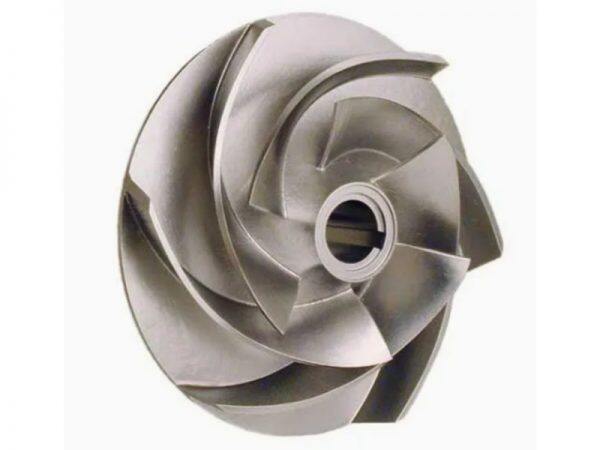What is Casting?
Casting is a manufacturing process where a liquid material (typically a metal or alloy) is poured into a mold that contains a hollow cavity of the desired shape. The material is then allowed to solidify. The solidified part, known as a casting, is then ejected or broken out of the mold to complete the process.
Its core purpose in mechanical equipment is to create complex, high-strength, and durable metal components that are difficult or economically unviable to produce by other methods like machining or forging.
Why is Casting So Prevalent in Mechanical Equipment?
Casting offers a unique set of advantages that make it indispensable:
Complex Geometries: It can produce parts with intricate internal passages (like coolant jackets in an engine block), complex curves, and undercuts in a single piece.
Mass Production: Once the mold is created, a large number of identical parts can be produced very efficiently and cost-effectively.
Material Versatility: Virtually any metal or alloy that can be melted can be cast, including iron, steel, aluminum, bronze, and zinc.
Cost-Effectiveness for Complex Parts: For large or intricate parts, casting is often far cheaper than machining from a solid block of metal (which creates a lot of waste) or assembling from many smaller pieces.
Excellent Strength-to-Weight Ratio (for certain processes): Processes like investment casting can produce very strong, lightweight parts.
Ability to Create Large Parts: Casting is one of the few methods capable of producing massive components, such as turbine housings or press frames.
Key Materials Used in Casting for Mechanical Equipment
The choice of material is critical for the part’s function.
Steel: High strength and toughness for demanding applications. Used for turbine casings, mining equipment, and structural components.
Copper Alloys (Bronze, Brass): Excellent corrosion resistance, good bearing properties, and high thermal/electrical conductivity. Used for valves, pumps, gears, bearings, and marine components.
Specific Application Examples in Mechanical Equipment
Internal Combustion Engines:
Engine Block: The foundation of the engine, with complex passages for coolant and oil. Almost exclusively made via sand casting (from iron or aluminum).
Cylinder Head: Houses the valves and combustion chambers. Also primarily sand cast.
Pistons: Often made using permanent mold casting for a fine grain structure and good strength.
Pumps, Compressors, and Valves:
Pump/Compressor Housings (Volutes): Feature complex internal geometries to direct fluid flow. Made by sand casting or investment casting depending on size and precision.
Impellers: Complex bladed geometries are perfectly suited for investment casting.
Valve Bodies: Must withstand high pressure and often have complex internal porting. Made via sand casting or investment casting.
Power Transmission:
Gearboxes and Housings: Enclosures for gears and bearings, often made by die casting (for small units) or sand casting (for large, industrial units).
Large Gears: Can be sand cast as a near-net-shape blank before the teeth are machined.
Heavy Machinery and Machine Tools:
Frames and Bases: Require high rigidity and vibration damping. Sand-cast iron is the material of choice for many machine tools, presses, and agricultural equipment.
Aerospace and Turbomachinery:
Turbine Blades/Vanes: Feature incredibly complex internal cooling channels and must withstand extreme temperatures. Made from superalloys using precision investment casting.
Limitations and Design Considerations
Surface Finish and Tolerances: Generally not as good as machined or forged parts, though processes like investment casting come close.
Defects: Internal defects like porosity, shrinkage cavities, and inclusions can occur if the process is not carefully controlled.
Lower Mechanical Properties: While good, the mechanical properties (especially impact toughness) of a standard casting are typically lower than those of a forged part of the same material due to the coarse grain structure.
Lead Time: Creating the molds (especially for sand and investment casting) can have a long initial lead time, though the per-part cost is low.
Conclusion
Casting is the backbone of modern mechanical equipment manufacturing. It provides the unique ability to create robust, complex, and often large metal components in an economically viable way. From the car you drive to the power plant that provides your electricity, cast components are working hard, often out of sight, to enable the function of countless mechanical systems. The choice of the specific casting process is a critical engineering decision that balances factors of complexity, cost, volume, and material performance.


